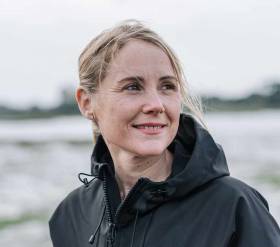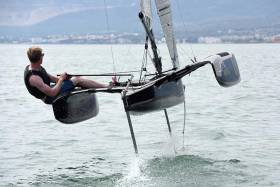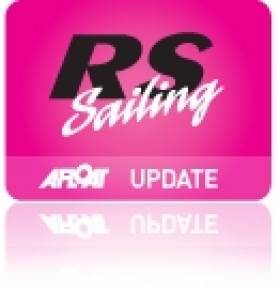Displaying items by tag: RYA Dinghy Show
RYA Dinghy Show at Farnborough This Weekend
Returning to Farnborough International this weekend (25-26 February) is the RYA Dinghy & Watersports Show - the season-opening Show organised by the RYA to encourage and inspire everyone to get afloat.
RYA staff will be on hand (stand A10) to help with advice on a range of topics from club development, and training to racing, coaching and legal advice.
Discover sailing, windsurfing and winging
The Show is the perfect opportunity for newcomers to discover a new sport. The RYA team will be on hand all weekend with all you need to know to start or progress your watersports journey.
You can also learn more about Discover Sailing opportunities with clubs and centres across the UK running taster sessions this summer.
More here
Virtual RYA Dinghy Show This Weekend Includes Irish Interest
A full agenda of expert talks and coaching sessions is promised this weekend at the RYA Virtual RYA Dinghy Show, plus two exhibition halls hosting just over 100 exhibitors.
The RYA has brought together world-class dinghy sailors and leading experts who'll be sharing their top tips, answering questions and getting you up to speed on all things dinghy sailing, whether you're interested in racing or cruising.
The online effort will have 101 exhibitor stands at the virtual show with many offering fantastic discounts, competitions and prizes.
Download below a schedule of the live talks, clinics and demos you can join on their stands over the weekend.
As Afloat reported previously, Dun Laoghaire's Saskia Tidey, GB's Tokyo 49erFx crew for Tokyo along with some Irish GP14 crews will all be appearing at the show.
Olympic Gold Medallist Sarah Ayton to Speak at RYA Dinghy Show
Over the weekend of 29 February- 01 March, double Olympic Gold Medallist Sarah Ayton OBE will be joining forces with British Sailing Team’s Sam Whaley at Alexandra Palace to host a fantastic range of expert speakers on the Great Hall and West Hall Stages and in the Knowledge Zone.
Sarah is famously known as one of the ‘three blondes in a boat’ trio from the 2008 Beijing Olympic Games where she won her second gold medal in the Yngling class. She was also named Rolex World Sailor of the Year in 2016 and is currently a performance coach, motivational speaker and busy mum to her two boys.
“I’m really looking forward to presenting the show,” she said. “I remember going to the Dinghy Show with my parents aged ten and looking at all the boats and wanting them all!
“Whatever your level of sailing there’ll be loads you won’t want to miss this time. We’ve got some really inspirational speakers lined up including adventure cruisers on the Great Hall Stage and world-class coaches in the Knowledge Zone. We hope to see you there!”
Sam Whaley initially enjoyed racing at his local sailing club before entering his first national competition in 2011. After that he was hooked and at 19 he knew he wanted to pursue a career in sailing. He is now a member of the British Sailing Team competing in the Laser class.
“It’s a real honour to be hosting the Dinghy Show alongside an Olympic Gold Medallist” Sam commented. “The show means so much to me, whether it’s seeing all the new and existing boats, entering all the competitions on the stands as a kid or simply finding out a lot more about sailing”.
The 2020 show theme is ‘a world of opportunity- see where dinghy sailing can take you.’ From competing on the race course, to travelling the globe, an exciting career on the water, or simply spending valuable time outdoors with family and friends, the show will celebrate the unique wealth of opportunities that dinghy sailing provides.
“I think the theme is very relevant.” Sarah continues. “I’ve been very fortunate to live my whole life sailing from learning at Queen Mary Reservoir to competing at two Olympic Games. I’ve sailed all over the world making friends for life and now having retired from Olympic sailing I’m starting that journey with my children and it’s a sport which we can all do together”.
See The Award-Winning ‘Flying Mantis’ Foiling Trimaran At The RYA Dinghy Show 2019
The award-winning Flying Mantis foiling trimaran will be showing in its latest, all-red hull design at the RYA Dinghy Show 2019 at Alexandra Palace next weekend.
Voted best Dinghy of the Year against stiff competition in the recent British Yachting Awards, Flying Mantis says its design makes foiling attainable for sailors of all shapes, sizes and levels of ability.
The all-carbon dinghy can accommodate taller sailors, weighing up to 120kgs, while the two sleek, wave-piercing outriggers bring excellent stability.
The concept behind this high-performance, fast dinghy design is for performance foiling to be open to all and easy to do.
British designed and built, the boat is quick and simple to set up and dismantle, so you have more time afloat.
Being very light (approx 25kg central hull and 12.5kg outriggers) the boat will take off at lower speeds enabling more fun in lighter breezes.
Flying Mantis MD Simon Chrispin says: “The joy of foiling is incredible. It’s addictive.
“The Flying Mantis is for sailors who want the thrills and experience of foiling a performance dinghy, yet who want to be confident that they will master it, before investing hours of their time learning the skills, or taking involuntary swims!
“Not all of us are svelte athletes either. The Flying Mantis opens up foiling to a much wider range of sailors who want to get airborne and share the fun.”
A unique selling point of the Flying Mantis is that it is really two boats in one, so it’s flexible for all the family.
As well as comfortably carrying crews up to 120kg, it can be switched from the central T-foil mode to a non-foiling configuration.
This lightweight trimaran has a regular rudder and daggerboard, enabling sailing in a wide range of conditions, from light airs to very windy, and progression at your own speed to foiling.
It means you can get afloat when others may be putting the cover back on if there is too much or too little breeze for foiling.
British Sailing Team member Sam Whaley said after his boat test: “I really loved the boat. It has the elegance of a Rolls Royce with the speed of a Moth! Very impressed!”
The all-carbon hulls are customisable, too. The boat on display at this year’s RYA Dinghy Show is an all-red model and will be showing the new rudder stock, for low hassle launching and recovery, plus a new dagger board and lift-up rudder for displacement sailing.
See the new Flying Mantis and arrange your own boat test at stand B60 at the RYA Dinghy Show on Saturday 2 and Sunday 3 March.
RS Aero to be Launched at RYA Dinghy Show
#rs – After three years of development testing four different hull variations and numerous rig, foil and layout options, RS Sailing will unveil what could become one of the most important new sailboats of this era at the Suzuki RYA Dinghy Show in London – the RS Aero.
In many ways you can think of the RS Aero as a 21st century Laser – with the most fundamental difference being ultra-light weight. A full size single hander that, amazingly, weighs 30kg - the same as an Optimist.
Every dinghy sailor can imagine how that changes the game. Sail the boat and you quickly realise you underestimated it. From the exhilaration on the water, to the sheer user-friendliness ashore, the RS Aero re-sets preconceptions: The rush as the boat accelerates - the ability to carry it up the beach single-handed – the convenience of youths or small women lifting it onto a roof-rack with ease.
Ultra-light weight means the hull form and rigs need not be extreme, so the RS Aero is utterly exciting without being hard to handle. Wide structural gunwales give a dry ride and make the boat quick and safe to right from capsize.
A three rig system, as per the Laser, has been envisaged from the start to cover the desired sailor range – RS Aero 5 (youths) – RS Aero 7 (women & light men) – RS Aero 9 (men). Racing will be separate – indeed some variation in event programmes is likely, especially for the RS Aero 5. All spars are carbon fibre, with a common top mast and boom for all sails and radically different stiffness lower mast sections. The hull is so light that even the Aero 5 has a higher sail area to weight ratio than most existing single-handers and retains the Aero's incredibly dynamic feel.
Two v4 pre-production prototype boats will be on the RS Sailing stand at Alexandra Palace. Final stages of the development process are underway, with every aspect of this simple boat having been examined, developed and tested for functionality over fashion, minimal weight, maximum strength and manufacturing efficiency. Perhaps the most remarkable achievement of the RS Aero is that despite being half the weight, built using epoxy resin and significant amounts of carbon fibre in the hull and all-carbon spars, the price will be close to that of a Laser.
UK roll-out of the RS Aero will take place first and a demo tour begins immediately after the Show. Orders are now being taken with a special launch price available on the first 100 boats – over half of which have already been reserved.
All through development, the reaction has been similar: Sir Ben Ainslie sailed an early prototype soon after the 2012 Olympics. Slightly nervous about going afloat due to his still bad back, he then couldn't be coaxed ashore until his next commitment forced him in. Giovanni Belgrano, head of Emirates Team New Zealand's Technical Team, flew straight back from the America's Cup finals to his beach house in Gurnard, Isle of Wight, where RS Aero development sailing happened to be underway. A few hours later his smile was back and he ordered two boats.
From weekend warriors to discerning professionals, the RS Aero re-ignites passion for sailing in its purest, least complicated form. With RS Sailing's global distribution network, worldwide success seems assured.































































